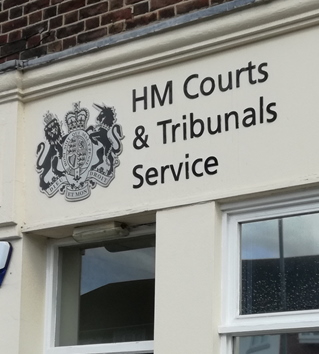All lawyers using AI must check accuracy of citation of authority or quotations using reputable sources of legal information, Upper Tribunal warns
In a Hamid judgment published yesterday, the Upper Tribunal (Immigration and Asylum Chamber) issued guidance and a stern warning to lawyers on the use of artificial intelligence (AI), after finding that a self-employed barrister had misled the tribunal by citing a fictitious Court of Appeal judgment generated by ChatGPT.
 The barrister, Mr Muhammad Mujeebur Rahman, was referred to the Bar Standards Board (BSB) for investigation. The Upper Tribunal panel of Mr Justice Dove, President of the Chamber, and Judge Lindsley concluded that Mr Rahman had "misused artificial intelligence and attempted to mislead the Tribunal contrary to the obligations as set out in the BSB regulatory framework which require him to observe his duty to the Court, to act with honesty and integrity, not to behave in a way which diminishes trust and confidence in the profession, and to provide a competent standard of work to clients."
The barrister, Mr Muhammad Mujeebur Rahman, was referred to the Bar Standards Board (BSB) for investigation. The Upper Tribunal panel of Mr Justice Dove, President of the Chamber, and Judge Lindsley concluded that Mr Rahman had "misused artificial intelligence and attempted to mislead the Tribunal contrary to the obligations as set out in the BSB regulatory framework which require him to observe his duty to the Court, to act with honesty and integrity, not to behave in a way which diminishes trust and confidence in the profession, and to provide a competent standard of work to clients."
Mr Rahman had cited passages from the non-existent case of Y (China) [2010] EWCA Civ 116 when drafting the grounds of appeal for a case in March 2025. Following confusion over the judgment at the Upper Tribunal hearing in June, Mr Rahman said he was not relying on the case of YH (Iraq), which is the genuine case with the neutral citation number [2010] EWCA Civ 116. He instead offered a series of alternative authorities, none of which raised the issues he had claimed were in Y (China).
The Upper Tribunal panel then handed him a copy of R (Ayinde) [2025] EWHC 1383 (Admin), an important High Court judgment on the misuse of generative AI in legal proceedings, and asked him to reconsider his position over lunch. Following the break, Mr Rahman assured the Tribunal, based on "ChatGPT research", that Y (China) was in fact a valid Court of Appeal decision. When directed by the Tribunal to submit a copy of the judgment, he later handed in internet print-outs with misleading references rather than a judgment.
In a letter to the Tribunal on 24 June, Mr Rahman claimed that he had meant to cite YH (Iraq) and apologised for the confusion, attributing the mistake to acute illness during drafting and a recent hospitalisation in Bangladesh for health problems. In a subsequent letter to the Tribunal in July, however, he accepted that YH (Iraq) had not raised the issues he had relied on for his grounds of appeal and so was not relevant.
In its judgment issued yesterday, the Upper Tribunal found Mr Rahman had acted without integrity, honesty and competence. It noted he "did not immediately admit to his unprofessional use of ChatGPT but astonishingly maintained that the case was genuine because of it having been evidenced by this AI large language model." However, the Tribunal concluded Mr Rahman had not deliberately submitted false material, but rather he was not initially aware that AI large language models such as ChatGPT were capable of inventing non-existent authorities.
The Upper Tribunal's headnote summary warns all lawyers that they must be aware of the limitations of AI and must check the accuracy of citation of authority or quotations using reputable sources of legal information. It states:
1. AI large language models such as ChatGPT can produce misinformation including fabricated judgments complete with false citations.
2. The Divisional Court has provided guidance in the case of R (Ayinde) v London Borough of Haringey, Al-Haroun v Qatar National Bank QPSC [2025] EWHC 1383 (Admin) that the consequence of using AI large language models in a way which results in false authorities being cited is likely to be referral to a professional regulator, such as the BSB or SRA, as it is a lawyer's professional responsibility to ensure that checks on the accuracy of citation of authority or quotations are carried out using reputable sources of legal information. Where there is evidence of the deliberate placing of false material before the Court police investigation or contempt proceedings may also be appropriate.
3. Taking unprofessional short-cuts which will very likely mislead the Tribunal is never excusable.